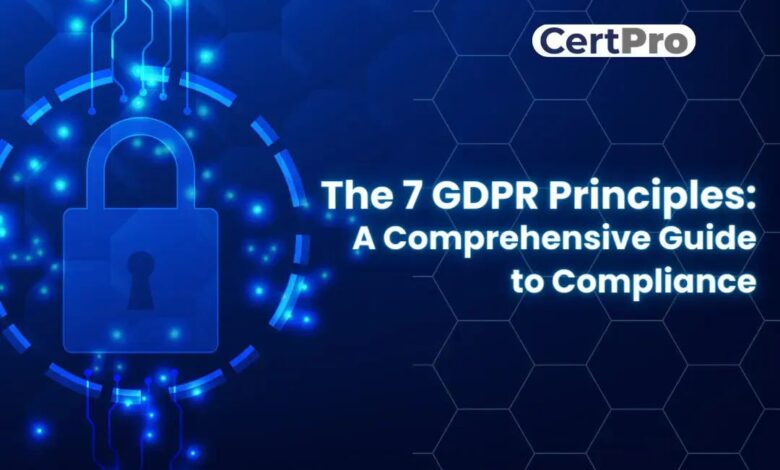Compliancia: A Comprehensive Guide

In an age where rules and regulations are rapidly evolving, the term “compliance” has risen to a level of critical importance in virtually every industry. Yet, despite its ubiquitous nature, the concept of compliance is often misunderstood or misinterpreted. This comprehensive guide aims to demystify compliance, providing you with a complete overview of what it means, why it matters, and how to maintain a program that ensures your business is aligned with legal and ethical standards.
Introduction
Compliance, in its essence, is the state of being in accordance with established guidelines or specifications. In the corporate world, these guidelines are primarily set forth by laws, industry standards, and regulations. Navigating the intricate web of compliance is crucial for any business to operate expediently, avoid legal pitfalls, and uphold ethical standards.
This proactive stance on regulations is what distinguishes responsible and successful businesses from those that operate on the fringes of legality.
Understanding Compliance
An essential starting point is to dissect the multiple layers of the term ‘compliance’. It’s not merely about adhering to the most conspicuous laws; it involves a sophisticated understanding of various forms of regulatory requirements.
Types of Compliance
There are three primary tiers of compliance:
- Regulatory Compliance: Pertains to an organization’s adherence to laws and regulations within its industry, such as labor laws, environmental regulations, and workplace safety standards.
- Industry-Specific Compliance: These are standards and rules that have been set by industry organizations or groups that the business has chosen to comply with voluntarily.
- Data Protection Compliance: With the rise of digital technology, data protection regulations like General Data Protection Regulation (GDPR) and California Consumer Privacy Act (CCPA) are becoming more prominent, mandating how businesses handle personal information.
Key Components of an Effective Compliance Program
Building and managing a robust compliance program entails several key components:
- Leadership: Senior management’s commitment is vital in setting the tone and providing necessary resources for compliance initiatives.
- Policies and Procedures: Clear and comprehensive policies and procedures are the backbone of a compliance program, guiding employees on acceptable behavior.
- Training and Communication: Regular training and transparent communication channels are imperative to ensure all staff are informed and educated on compliance matters.
- Monitoring and Reporting: A system for ongoing monitoring, auditing, and reporting is essential to identify and address compliance issues promptly.
- Enforcement and Discipline: Consistent enforcement of policies and disciplinary action when they are breached reinforce the importance of compliance.
Benefits of Compliance
Perhaps the most tangible benefit of a robust compliance program is the protection it offers against potential legal action.
Trust and Credibility
Risk Mitigation
businesses can minimize operational interruptions and better protect their financial well-being.
Challenges in Compliance
Complexity
The web of regulations that businesses must follow is growing more intricate by the day. The sheer volume of requirements, the interplay between different laws, and the constant updates can make compliance a complex and daunting endeavor.
Evolving Regulations
The regulatory landscape is not static. Laws change, new ones are enacted, and existing regulations get updated. Staying ahead of these changes and ensuring that compliance programs remain current is a continuous challenge.
Resource Allocation
For smaller businesses or those in sectors with tight profit margins, this can pose a substantial challenge.
Best Practices
Navigating the landscape of compliance requires a holistic approach that involves best practices at various levels of the business.
Regular Audits and Assessments
Conducting regular audits and assessments is the compass that keeps businesses on the right compliance path. These internal reviews help identify areas of strength and weakness, allowing for informed decision-making and strategic planning.
Training and Awareness Programs
An informed workforce is an invaluable asset. Ongoing training and awareness programs ensure employees understand the importance of compliance and their role in maintaining it.
Technology Solutions for Compliance Management
The right technology can streamline compliance management, making it more efficient and less prone to human error. Software tools that assist in monitoring, reporting, and managing compliance issues can be indispensable for complex organizations.
Conclusion
The importance of compliance can hardly be overstated. It is not an option; it is an imperative. Proactive compliance management is an investment in the present that pays dividends in the future. By being committed to a strong compliance regime, businesses can enhance their reputation, minimize risk, and contribute to the greater good of society.
In a world where trust in institutions is often questioned and legal complexities are the norm, compliance is the true north that guides companies through safe waters. By understanding the nuances of compliance, investing in best practices, and viewing it as a strategic advantage, businesses can turn what might seem like a burden into a beacon of success.




